Many proposals delivered for sake of Da Nang's socio-economic progress in new period
The talk ‘Da Nang’s 25-year Journey: Achievements and Prospects’ held on Tuesday witnessed many delegates highly appreciate Da Nang’s outstanding socio-economic development over the past time and make constructive proposals for the city’s development in the coming time as well, especially in tourism, urban planning, and making socio-cultural development commensurate with economic growth.
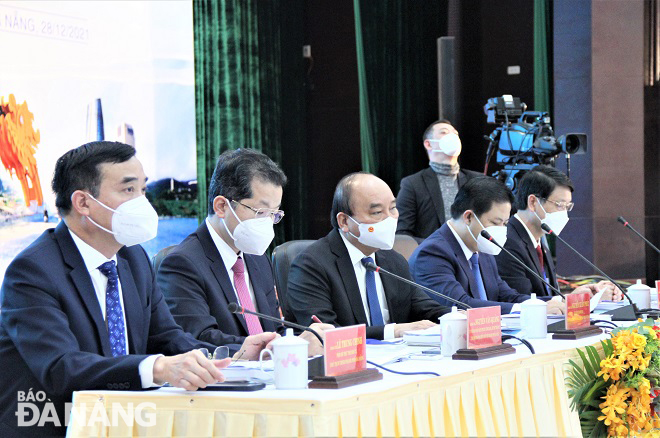 |
| State President Nguyen Xuan Phuc (center) and Da Nang leaders co-chair discussions at the talk “Da Nang’s 25-year Journey: Achievements and Prospects’, December 28, 2021. Photo: LAM PHUONG |
Making big strides
Assoc. Prof. Dr. Tran Dinh Thien, former Director of the Viet Nam Institute of Economics and a member of the Prime Minister's Economic Advisory Group for the 2016 - 2021 term affirmed that, over the past 25 years, as a centrally-governed city and a regional development hub, Da Nang has grown strongly, making a “true life change”.
Assoc. Prof. Dr. Tran Dinh Thien cited, as compared to 1997 when Da Nang was recognised as a centrally-governed city, in 2019, the city’s GRDP increased up by 8 times, GRDP per capita up 8.3 times, the state budget revenue up 23 times and tourist numbers up nearly 55 times.
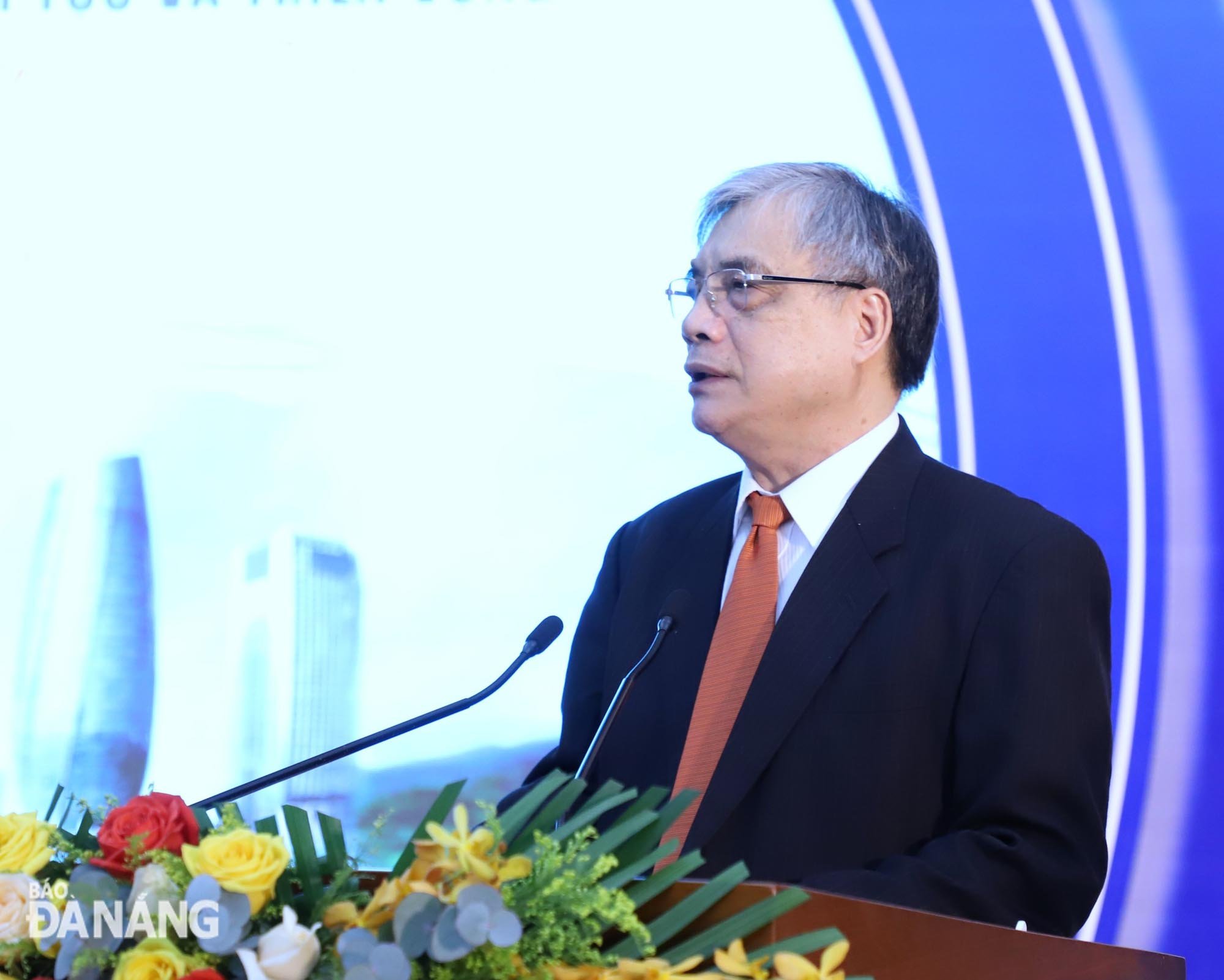 |
| Assoc. Prof. Dr. Tran Dinh Thien, former Director of the Viet Nam Institute of Economics and a member of the Prime Minister's Economic Advisory Group for the 2016 - 2021 term delivers a speech. Photo: NGOC PHU |
The above-mentioned positive results have been attributed to the city’s firm stance on catching up with the trend of developing open economy and deepening international economic integration, along with its potential natural advantages, all of which together formed a new resonant power.
The proud rise of the city over the past 25 years is mainly attributed to the decisive contribution of the business force, especially the pioneering of large enterprises with their strategic investment projects in Da Nang. Sungroup, Vingroup, Vietjet, BRG and Muong Thanh and other big investors are ‘big names’ in the business community.
Structuring tourism industry for recovery
Meanwhile, Assoc.Prof.Dr. Pham Trung Luong, former Deputy Director of the Institute of Tourism Development Research, highly hailed Da Nang for its miraculous development steps with the average annual growth rate of tourists in the 1997 – 2019 period reaching 25.8%, higher than the whole country’s average of 18.6%.
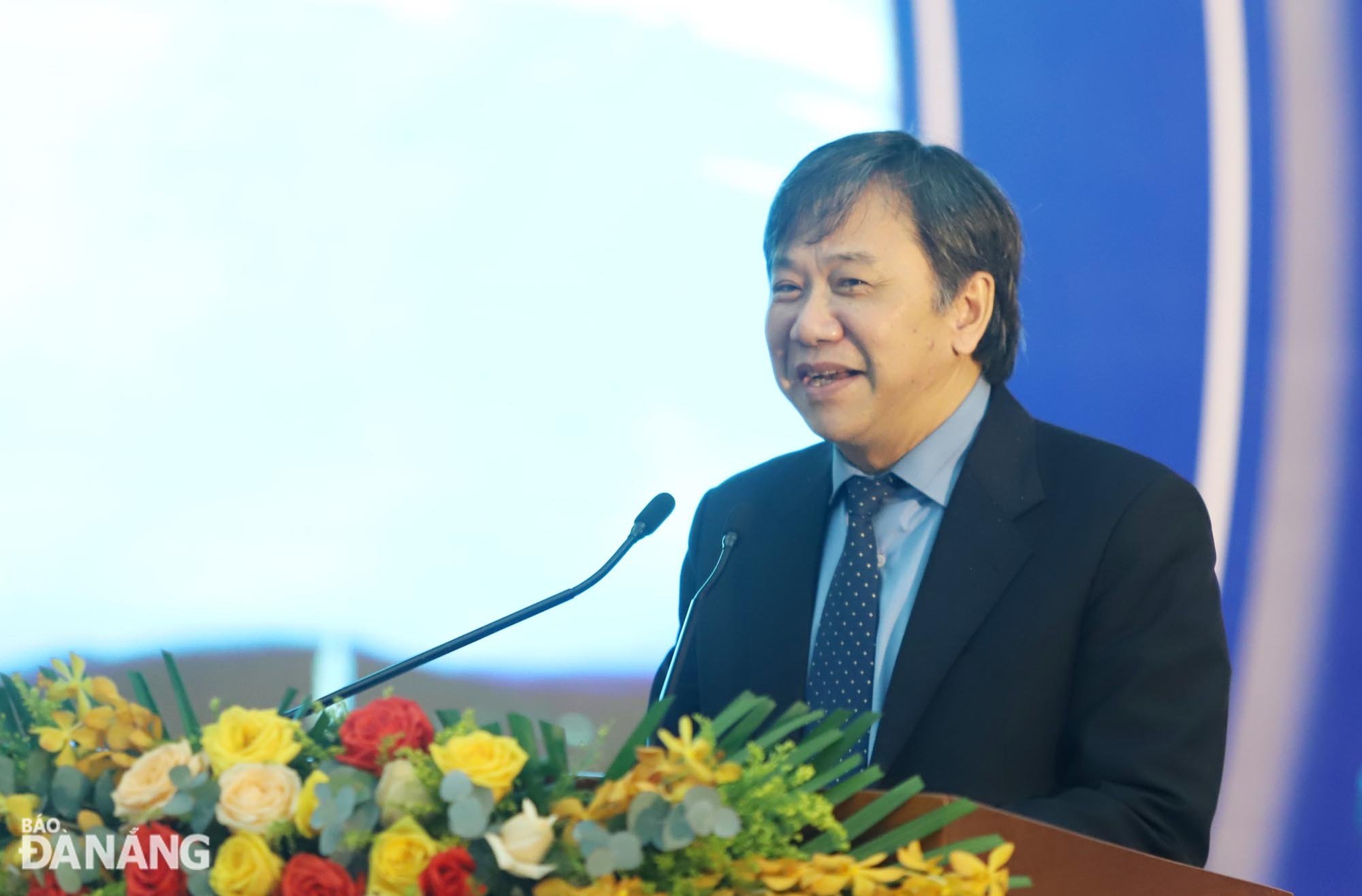 |
| Assoc.Prof.Dr. Pham Trung Luong, former Deputy Director of the Institute of Tourism Development Research, addresses the event. Photo: NGOC PHU |
In 1997, the city received 370,000 visitors, including 111,000 international ones, whilst revenue generated from tourism was only VND529 million. In 2019, the corresponding figures were 8,692,400 (tourist numbers), 3,523,000 (foreign ones) and VND30,973 billion (in revenues).
Also in 2019, tourism's contribution to the city’s GRDP was 31.4% (equivalent to VND 30,973 billion).
Amid the complicated developments of COVID-19, Assoc.Prof.Dr. Pham Trung Luong urged the city to restructure its tourism industry for recovery and development strides which are commensurate with the city's position under Vi Nam's tourism development strategy by 2030.
Heading towards a livable city
According to Dr. Dang Huy Dong, Director of the Institute of Planning and Development, planning always plays an important role in orienting visions and long-term strategies for the city. In particular, for Da Nang, a good plan will serve as ‘a launching pad’ to make even more socio-economic breakthroughs in a bid to affirm its leading position as in the central key economic zone.
Dr. Dang Huy Dong said that a livable city of the 21st century is evaluated on eight basic factors: climate and weather; unusual natural phenomenon; security, personal safety; politics and air quality; full medical care; adequate housing and public facilities at reasonable costs, diverse housing suitable for the needs of all residents; access to social networks and entertainment services and urban infrastructure. Da Nang has till date basically met the first four factors.
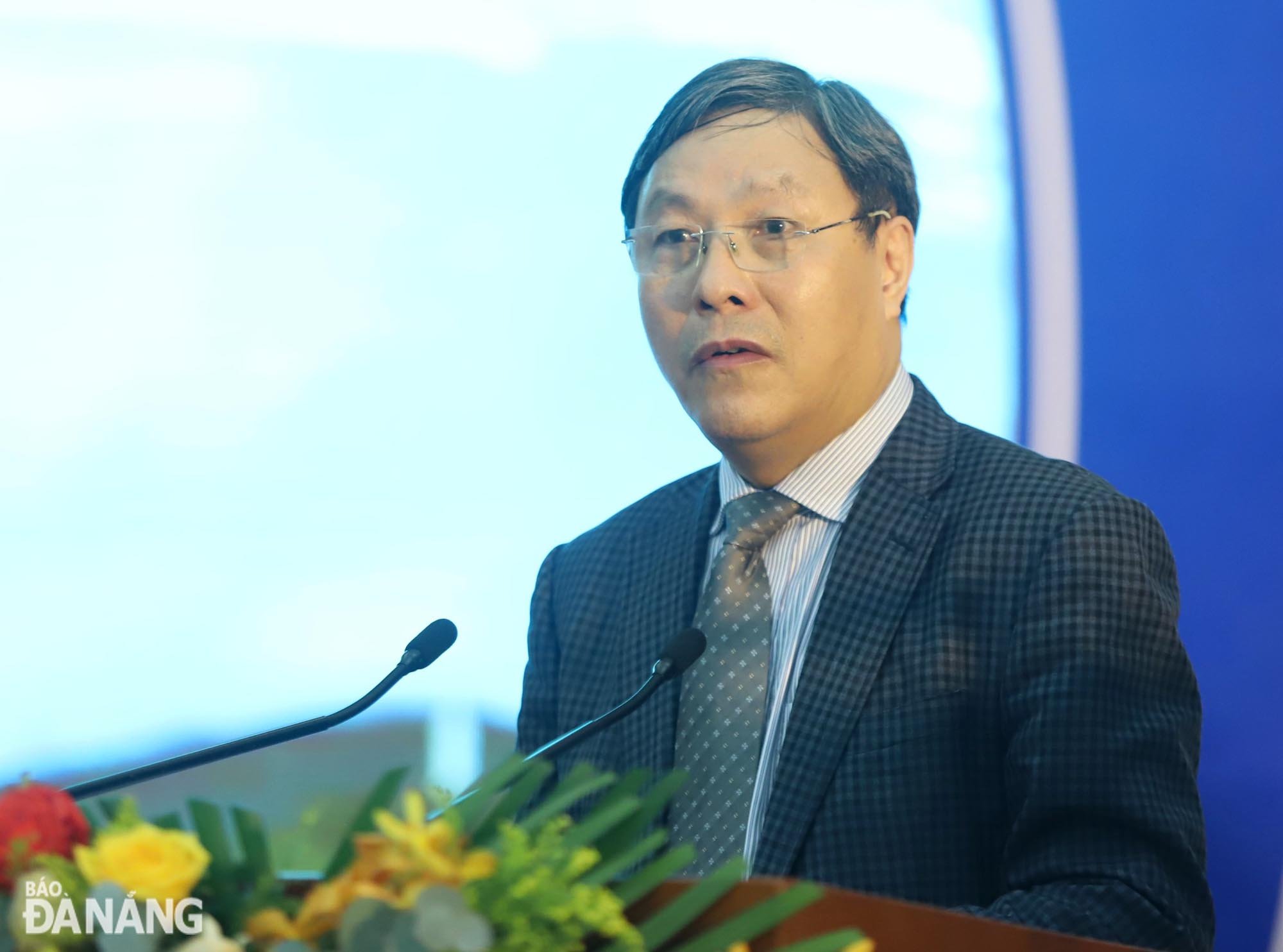 |
| Dr. Dang Huy Dong, Director of the Institute of Planning and Development, delivers a speech at the event. Photo: NGOC PHU |
In order to achieve the remaining factors, it is high time for the city to orient its construction planning based on basic principles such as the conservation of nature and historical relics, building common urban areas for dwellers from all walks of life with diverse incomes and ages, and developing share services, saving land funds, reducing personal expenses, promoting utilities for pedestrian and bicycle riders, reducing the use of personal cars, increasing facade areas for commercial shopping services, prioritizing the planning of public transport networks such as subways and buses, and developing Compact City model.
Culture on par with economics
In his perspective, Chairman of the Da Nang Union of Literary and Art Associations Bui Van Tieng suggested a number of things the city needs to do under the spirits of Culture must be placed on equal footing with economics, politics and social affairs as stated at the recently-held National Cultural Conference.
Socio-cultural development must be commensurate with economic development, affirmed Chairman Tieng. Schools must become places of cultural transmission from generation to generation, in parallel with a serving as a stronghold to for culture preservation.
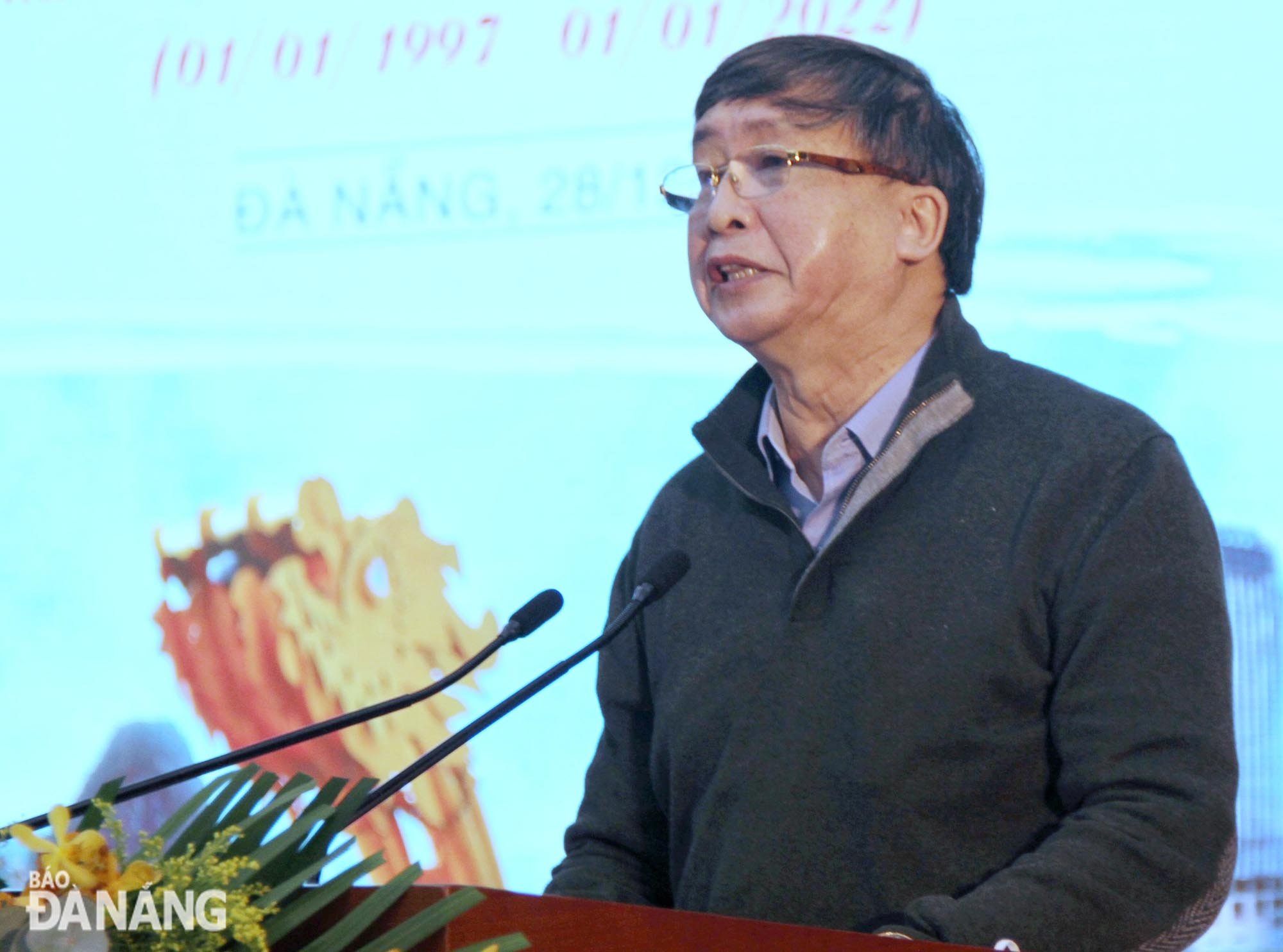 |
| Mr Bui Van Tieng, the Chairman of the Da Nang Union of Literary and Art Associations presents his constructive ideas at the event. Photo: LAM PHUONG |
All the fields of culture, society and economy must reach the maximum level of development, all of them shall be dependent and support one another for mutual development.
On September 8, 2016, the Prime Minister issued Decision No. 1755/QD-TTg approving the strategy for the development of Viet Nam's cultural industries by 2020, with a vision towards 2030.
Da Nang is fully competitive in the fields of architecture, handicrafts, performing arts, fine arts, photography and exhibition, television and radio and cultural tourism. It is highly recommended to have a plan to promote advantages for the sake development of the city's cultural industry.
Reporting by NGOC PHU, LAM PHUONG – Translating by A. THU